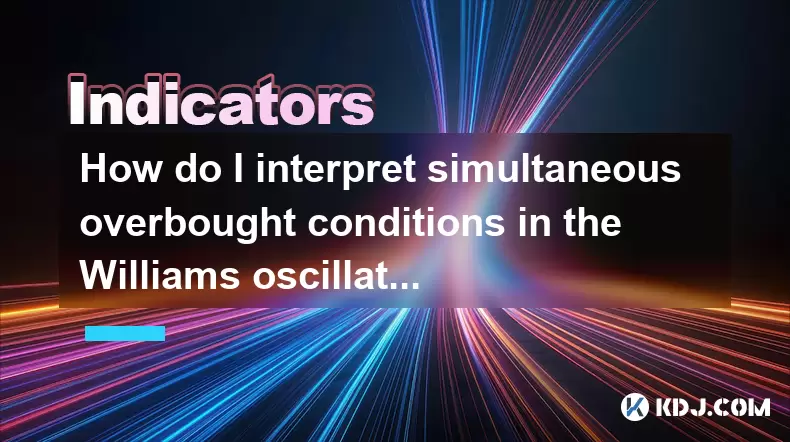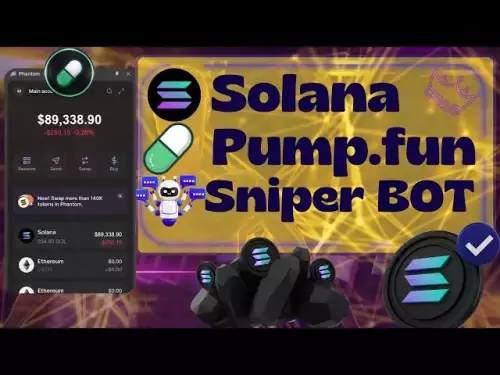-
 Bitcoin
Bitcoin $115100
-1.30% -
 Ethereum
Ethereum $4758
-1.70% -
 XRP
XRP $3.027
-2.19% -
 Tether USDt
Tether USDt $0.9998
-0.01% -
 BNB
BNB $883.2
-1.42% -
 Solana
Solana $204.0
2.62% -
 USDC
USDC $1.000
0.02% -
 Dogecoin
Dogecoin $0.2371
-0.97% -
 TRON
TRON $0.3612
-1.24% -
 Cardano
Cardano $0.9128
-2.19% -
 Chainlink
Chainlink $26.13
-3.93% -
 Hyperliquid
Hyperliquid $44.73
0.90% -
 Sui
Sui $3.715
-0.56% -
 Stellar
Stellar $0.4153
-2.41% -
 Ethena USDe
Ethena USDe $1.000
-0.04% -
 Bitcoin Cash
Bitcoin Cash $588.9
-2.06% -
 Avalanche
Avalanche $25.91
3.27% -
 Hedera
Hedera $0.2525
-1.45% -
 Litecoin
Litecoin $120.9
-1.35% -
 UNUS SED LEO
UNUS SED LEO $9.607
0.30% -
 Toncoin
Toncoin $3.382
-0.31% -
 Shiba Inu
Shiba Inu $0.00001329
-0.38% -
 Uniswap
Uniswap $11.38
-1.67% -
 Polkadot
Polkadot $4.222
2.83% -
 Aave
Aave $354.5
4.93% -
 Dai
Dai $0.0000
0.00% -
 Bitget Token
Bitget Token $4.704
-1.49% -
 Cronos
Cronos $0.1565
1.83% -
 Ethena
Ethena $0.7463
1.55% -
 Monero
Monero $265.8
-0.39%
How do I interpret simultaneous overbought conditions in the Williams oscillator and the KDJ indicator?
When Williams %R rises above -20 and KDJ’s %K and %D exceed 80, it signals strong overbought conditions, increasing the likelihood of a short-term pullback or reversal.
Aug 13, 2025 at 11:36 am

Understanding the Williams %R Indicator and Overbought Signals
The Williams %R is a momentum oscillator developed by Larry Williams that measures overbought and oversold levels in a market. It operates on a scale from 0 to -100, with readings above -20 generally indicating overbought conditions. When the Williams %R crosses above -20, it suggests that the asset may be overextended to the upside and due for a potential pullback or correction. This signal becomes more significant when confirmed by other technical tools. The calculation involves comparing the current closing price to the highest high over a specified lookback period, typically 14 days. The formula is:
Williams %R = [(Highest High – Close) / (Highest High – Lowest Low)] × -100
When both the current price and recent momentum are high, the indicator enters the overbought zone. Traders watch for divergence between price and the oscillator—such as prices making new highs while Williams %R fails to do so—as a potential reversal signal.
Decoding the KDJ Indicator and Its Overbought Threshold
The KDJ indicator is an enhanced version of the Stochastic Oscillator, widely used in Asian markets and gaining global traction. It consists of three lines: %K (fast stochastic), %D (slow stochastic), and %J (a momentum derivative). The %K line is calculated based on the current closing price relative to the price range over a set period, usually 9 days. The %D line is a moving average of %K, and %J = 3×%K – 2×%D. Overbought conditions in KDJ are typically signaled when the %K line rises above 80 and the %D line follows suit. When both %K and %D are above 80, and especially when the %J line exceeds 100, the market is considered strongly overbought. This tri-line structure allows for more nuanced signals than basic stochastics, including crossovers and divergence detection.
Simultaneous Overbought Readings: What They Imply
When both the Williams %R and KDJ indicator show overbought conditions at the same time, it increases the probability of a short-term price reversal. This confluence suggests that momentum across different calculation methodologies is aligning toward an exhausted uptrend. The Williams %R focuses on the relationship between closing price and recent range extremes, while KDJ emphasizes momentum and smoothing through its %D and %J components. Their simultaneous overbought status implies that not only is the price near its recent high, but momentum is also peaking. This dual confirmation can be especially reliable in ranging or moderately volatile markets. However, in strong trending environments, overbought conditions can persist for extended periods, so context is crucial.
Step-by-Step Analysis of a Simultaneous Overbought Scenario
To analyze a situation where both indicators are overbought, follow these steps:
- Open your trading platform and load the Williams %R (14-period) and KDJ (9,3,3) indicators on the same chart.
- Confirm that the Williams %R value is above -20 (e.g., -15 or -10).
- Verify that the %K line of KDJ is above 80 and the %D line is also above 80.
- Check for bearish divergence: Are prices making higher highs while one or both oscillators are making lower highs?
- Examine the %J line: If it has spiked above 100, this may indicate extreme momentum exhaustion.
- Look at volume patterns: A surge in volume during the overbought phase may signal distribution.
- Identify nearby resistance levels on the price chart that align with the oscillator signals.
- Wait for a bearish crossover in KDJ (e.g., %K crossing below %D while both are above 80).
- Monitor for a Williams %R reversal below -20 as a confirmation of momentum shift.
This checklist ensures a comprehensive evaluation before acting on the signal.
Adjusting Parameters for Different Timeframes and Assets
The default settings for Williams %R (14 periods) and KDJ (9,3,3) work well for daily charts, but adjustments may be necessary depending on volatility and timeframe. For shorter timeframes like 1-hour or 15-minute charts, consider reducing the Williams %R period to 10 and KDJ to (7,3,3) to increase sensitivity. In highly volatile cryptocurrencies such as Bitcoin or Ethereum, wider thresholds may be needed—some traders use -15 instead of -20 for Williams %R overbought levels to avoid premature signals. Conversely, on weekly charts, extending Williams %R to 21 periods and KDJ to (14,3,3) can filter out noise. Always backtest parameter changes on historical data within the same asset class before live application.
Common Pitfalls and How to Avoid Them
One major mistake is acting on overbought signals in a strong uptrend without additional confirmation. In trending markets, assets can remain overbought for long durations. Another issue is ignoring divergence—failing to notice that while price rises, the oscillator fails to confirm can lead to missed reversals. Over-reliance on a single timeframe is another trap; always check higher timeframes to determine the dominant trend. Some traders misinterpret the %J line when it exceeds 100, assuming an immediate reversal, but in momentum-driven crypto markets, %J can stay elevated. Avoid entering short positions solely based on overbought readings—wait for candlestick reversal patterns like shooting stars or bearish engulfing bars. Also, ensure that the volume profile supports the reversal signal.
Frequently Asked Questions
Can overbought conditions persist in a bull market?
Yes, in strong bullish trends, especially in cryptocurrencies, overbought readings on Williams %R and KDJ can last for days or weeks. Momentum can remain elevated as buyers continue to enter. These signals should not be interpreted as automatic sell triggers but as warnings to watch for confirmation.
How do I distinguish between a pullback and a full reversal?
A pullback typically sees price retrace 38.2% to 50% of the prior move and resumes the trend. A reversal breaks key support and shows sustained bearish momentum. Use moving averages and trendlines to assess structural integrity. If the 50-period EMA remains unbroken, a pullback is more likely.
Should I use other indicators to confirm overbought signals?
Yes, combining with RSI, MACD, or volume oscillators enhances reliability. For instance, if RSI is also above 70 and MACD shows a bearish crossover, the confluence strengthens the overbought case.
Is the KDJ indicator available on all trading platforms?
Most major platforms like TradingView, MetaTrader, and Binance support KDJ, though it may be labeled as Stochastic Slow or require manual addition via scripts. On platforms without built-in KDJ, you can replicate it using custom formulas for %K, %D, and %J.
Disclaimer:info@kdj.com
The information provided is not trading advice. kdj.com does not assume any responsibility for any investments made based on the information provided in this article. Cryptocurrencies are highly volatile and it is highly recommended that you invest with caution after thorough research!
If you believe that the content used on this website infringes your copyright, please contact us immediately (info@kdj.com) and we will delete it promptly.
- Crypto, Pepe, and Investment: Navigating the Meme Coin Mania in 2025
- 2025-08-24 06:45:29
- Crypto Market Recovery: Unearthing ROI Gems in 2025
- 2025-08-24 05:25:35
- Aave, World Liberty, and Token Allocation: Decoding the DeFi Buzz
- 2025-08-24 05:25:35
- Crypto Presales & Exchange Launches: What's Hot Now?
- 2025-08-24 05:45:17
- Meme Coin Mania: Experts Rank Layer Brett as the Top Contender
- 2025-08-24 05:45:18
- Sui Price Prediction: Will the Breakout Move Stick?
- 2025-08-24 06:05:29
Related knowledge

What does it mean when the +DI and -DI cross frequently in the DMI indicator but the ADX is flattening?
Aug 11,2025 at 03:15am
Understanding the DMI Indicator ComponentsThe Directional Movement Index (DMI) is a technical analysis tool composed of three lines: the +DI (Positive...

What does the sudden appearance of a "dark cloud cover" candlestick pattern during an uptrend indicate?
Aug 13,2025 at 11:35am
Understanding the 'Dark Cloud Cover' Candlestick PatternThe dark cloud cover is a bearish reversal pattern in technical analysis that typically appear...

What does it mean when the moving average, MACD, and RSI all send buy signals simultaneously?
Aug 11,2025 at 01:42pm
Understanding the Convergence of Technical IndicatorsWhen the moving average, MACD, and RSI all generate buy signals at the same time, traders interpr...

What does it mean when both the KDJ indicator and the RSI show overbought signals simultaneously?
Aug 13,2025 at 11:35am
Understanding the KDJ Indicator in Cryptocurrency TradingThe KDJ indicator is a momentum oscillator derived from the Stochastic Oscillator, widely use...

What does it mean when the price is trading above the SAR indicator but the red dots are densely packed?
Aug 09,2025 at 11:49pm
Understanding the SAR Indicator and Its Visual SignalsThe SAR (Parabolic Stop and Reverse) indicator is a technical analysis tool used primarily to de...

What does it mean when the candlestick chart forms a "Morning Star" but trading volume is sluggish?
Aug 12,2025 at 06:28pm
Understanding the Morning Star Candlestick PatternThe Morning Star is a three-candle bullish reversal pattern commonly observed in cryptocurrency pric...

What does it mean when the +DI and -DI cross frequently in the DMI indicator but the ADX is flattening?
Aug 11,2025 at 03:15am
Understanding the DMI Indicator ComponentsThe Directional Movement Index (DMI) is a technical analysis tool composed of three lines: the +DI (Positive...

What does the sudden appearance of a "dark cloud cover" candlestick pattern during an uptrend indicate?
Aug 13,2025 at 11:35am
Understanding the 'Dark Cloud Cover' Candlestick PatternThe dark cloud cover is a bearish reversal pattern in technical analysis that typically appear...

What does it mean when the moving average, MACD, and RSI all send buy signals simultaneously?
Aug 11,2025 at 01:42pm
Understanding the Convergence of Technical IndicatorsWhen the moving average, MACD, and RSI all generate buy signals at the same time, traders interpr...

What does it mean when both the KDJ indicator and the RSI show overbought signals simultaneously?
Aug 13,2025 at 11:35am
Understanding the KDJ Indicator in Cryptocurrency TradingThe KDJ indicator is a momentum oscillator derived from the Stochastic Oscillator, widely use...

What does it mean when the price is trading above the SAR indicator but the red dots are densely packed?
Aug 09,2025 at 11:49pm
Understanding the SAR Indicator and Its Visual SignalsThe SAR (Parabolic Stop and Reverse) indicator is a technical analysis tool used primarily to de...

What does it mean when the candlestick chart forms a "Morning Star" but trading volume is sluggish?
Aug 12,2025 at 06:28pm
Understanding the Morning Star Candlestick PatternThe Morning Star is a three-candle bullish reversal pattern commonly observed in cryptocurrency pric...
See all articles

























































































